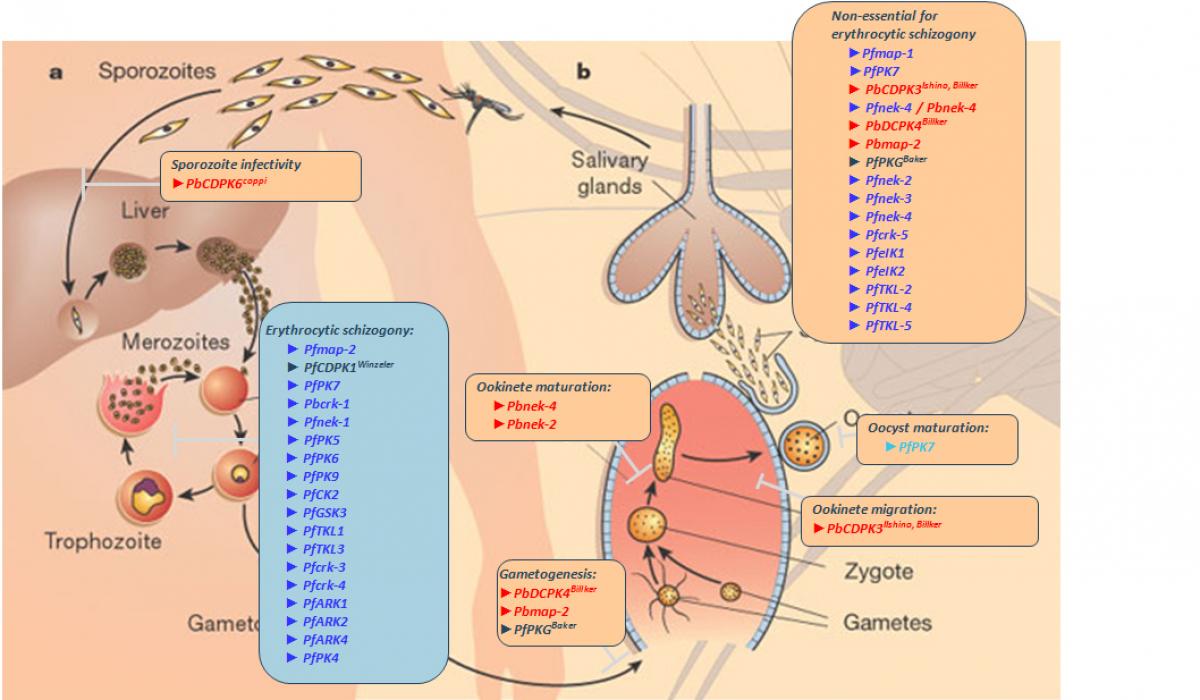
| Figure above: Life cycle of P. falciparum, showing mapped selected potential kinase targets. Mapped against this life cycle are selected protein kinases which present potential targets at different stages of the life cycle. The kinases in the blue box are essential for erythrocytic schizogony, while those in the orange boxes are not essential for erythrocytic schizogony. For several of these kinases, functions at specific stages of the development of the parasite in themosquito vector have been identified, indicated by orange boxes. Gene names in blue and red characters refer to P. falciparum and P. berghei enzymes, respectively. |
Proteins are used by cells as tools to carry out most of their biological processes, ranging from the respiration or metabolism of nutrients, to the sending and processing of intra- and intercellular signals, and to maintaining cellular shape, ensuring growth and controlling cell division. The activities of the proteins responsible for these activities can usually be regulated by binding small molecules to them, a property that is often used in rational drug design. In the case of developing a drug against a pathogenic or parasitic organism, one strategy is to identify a protein whose proper function is essential for the organism’s survival, and subsequently to find a chemical that inhibits this protein’s function. If the search is successful, the drug will either disable the organism’s growth and proliferation, or will actively kill it.
Kinases are a class of proteins that regulate the function of many other proteins, and inhibiting the function of a kinase often has dramatic effects on a cell. The human kinome involves a large class of about 550 kinases and has been studied extensively in drug discovery aimed at human targets, this creating a large existing body of knowledge on these proteins. Here, the decision was taken to work within this sphere of knowledge, but additionally to attempt a similar approach targeted against the related, but different, kinases of the malarial parasite. These parasitic kinases are less well understood and characterized, and are an active area of current biological research, particularly in academia (see Figure). The term “neglected diseases” denotes diseases against which little research has been carried out because they are either rare or not perceived as commercially attractive. Neglected diseases include illnesses that are widespread in underdeveloped countries, thus affecting mostly poor people who cannot afford to buy medicines.
As a result, profit-oriented pharmaceutical companies are usually not strongly interested in investing in searching for drugs against these diseases. A prominent example of a neglected disease is malaria, caused by the parasite Plasmodium falciparum. It is estimated that 300-500 million people are infected with malaria every year, and the disease causes approximately one million deaths annually, many in young children. It additionally causes significant developmental damage in the latter group.
